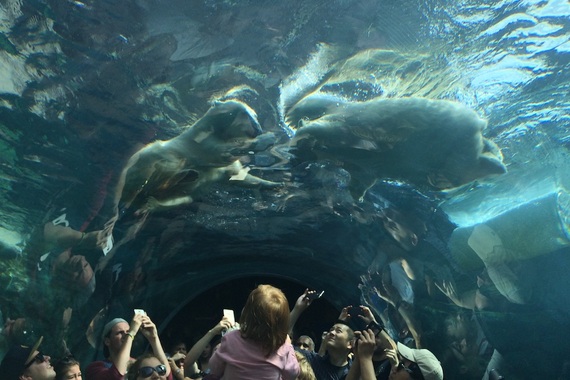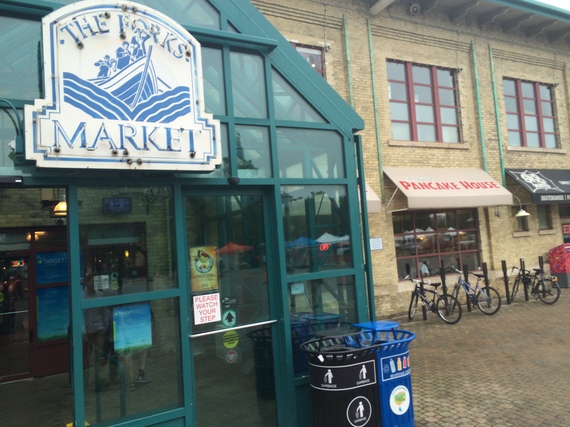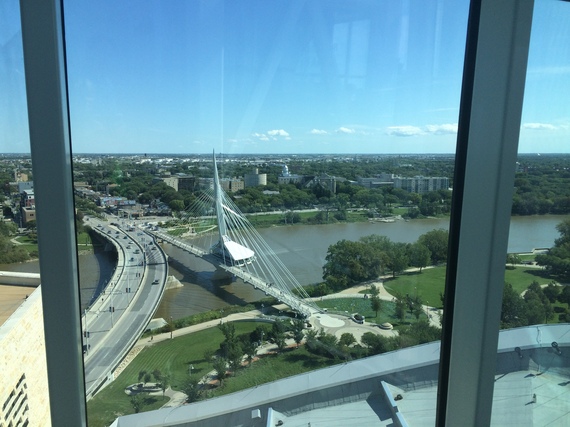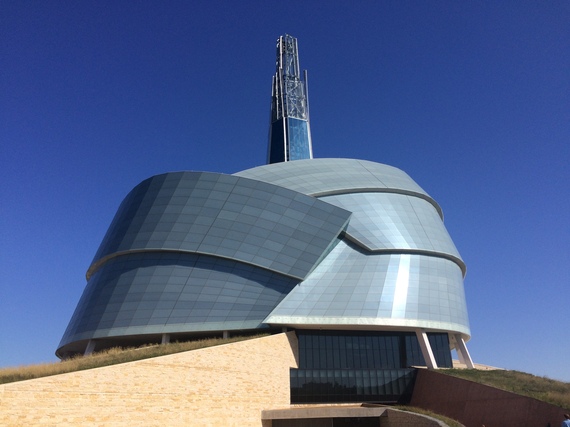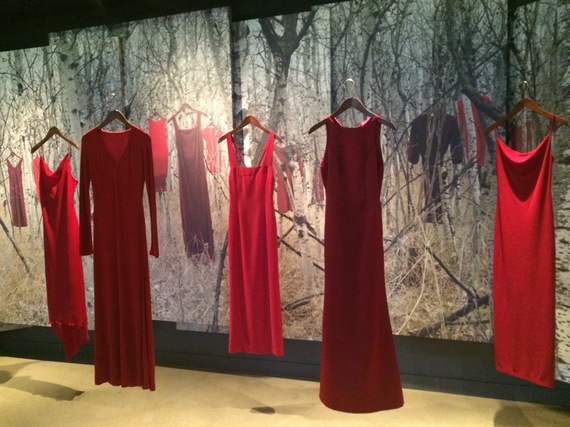All roads lead to Winnipeg. Sorry, Rome. But in the Canadian midwest, that's certainly true. It is a hub for conservation and environmental awareness and a center of commerce and culture, as well as a crossroads of the human rights movement.
Oh, it's also "conveniently located" in the middle of nowhere. Manitobans would be the first to admit it.
Famous bears of Winnipeg
The train ride from Winnipeg to Churchill, on the banks of the Hudson Bay, takes more than 24 hours. Few tourists, let alone Winnipeggers, would ever have the time for this adventure. Here's what they're missing: friendly arctic seals, the curious, ghostly-white beluga whales and the mercurial polar bears.
How do we know? Well, it's no secret.
If you can't go to the bears, bring the bears to Winnipeg, right? Which is exactly what they did at the Assiniboine Park Zoo. The playful polar bears are the centerpiece, drawing crowds of families and adults to its new Journey to Churchill experience.
We have to admit we felt a connection to the yearlings splashing in the pool, easily visible from both the underground viewing area and the surface.
Of course, Winnipeg's most famous bear was an American black bear cub who served as the mascot for the Canadian Army Veterinary Corps during World War I. When the cub's owner, Lt. Harry Colebourn, was dispatched to the front lines in 1915, the cub was donated to the London Zoo where she inspired an author named A. A. Milne to write a series of beloved children's stories. If you haven't guessed yet, we're talking about Winnie the Pooh.
The Churchill exhibit does more than bring the polar bears to the people. It raises awareness of the problems faced by this arctic population and how climate change also affects Canada.
This is also true at the Oak Hammock Marsh Interpretive Centre. Migrating birds flock to wetlands across Canada's plains. The preserve is home to more than 300 species including the Sandhill Crane, Yellow-headed Blackbird, and LeConte's Sparrow.
At the center, researchers monitor the marsh, noting changes in the migration season as well as the creatures of the swamp. Our family threw on some hip-waders to help collect samples. We slogged through the reedy bog grasses to scoop up dragonfly larvae, leeches, snails, freshwater shrimp and frogs. We never knew what would end up in our nets or collection buckets. It was a bit messy, but loads of fun.
A migration of people
Thousands of years ago, Winnipeg was the meeting place for indigenous first nations. The early aboriginal peoples came to the place where the Red and Assiniboine rivers intersect to meet other tribes and trade. Later, they were joined by French trappers.
Today, the Forks remains a meeting place of sorts. It connects the French Quarter of St. Boniface with English-speaking Winnipeg. It's also a major cultural hub, home to theaters and museums as well as public parks and markets.
But let's be honest. The Forks is all about the food. At its center stands the old brick railhouse, turned into a public market, where we found hot, fresh, sticky buns for breakfast and crunchy fish and chips for lunch.
If your tastes are a little more exotic, step on the Esplanade Riel pedestrian bridge and visit Mon Ami Louis. It's believed to be the only restaurant located midriver along a suspension bridge.
This is also the starting place for the Winnipeg Trolley Company tour, which weaves in and out of the neighboring communities, showing how they are all tied to the city center.
Our favorite part of the tour was learning all about the city's infamous first mayor, Francis Evans Cornish. Let's just say that his methods of getting elected and maintaining law and order were dubious at best. The tales we heard were legendary, if perhaps not all true.
You've got that, right?
If the Forks is the historic center of commerce, then the new Canadian Museum for Human Rights is the moral core of Winnipeg, if not the whole country. The striking building is as provocative on the outside as it is on the inside.
Dedicated to the evolution, celebration and future of human rights, the museum aims to not only raise awareness of issues and inspire individuals to make personal changes, but also give visitors the tools to make a meaningful difference wherever they live.
At its core is the idea that all human beings have the right to freedom, equality and respect in their lives and in their government. Most permanent exhibits put you in the shoes of those discriminated against and the people who have made it their mission to help.
The building itself was designed to simulate the journey toward human rights. The base is considered the root, where your path to understanding begins. From here, it is an uphill climb along an 800-meter ramp through floors dedicated to important moments in human rights history. Not all of them are shining moments.
The Canadian Journeys gallery reflects the continuing efforts to achieve human rights for all in the great, white north, outlining the steps and missteps taken along the way. Facing past mistakes head-on gives us hope that today's issues can also be resolved.
As you continue up the ramp toward the Tower of Hope, light fills the passageways through glass windows that, from the outside, look like a crystal cloud or doves' wings wrapping the body of the building. The overall impression is that of the healing and transformation of humanity as you make your way to the observation deck, a beacon of light 100 meters in the sky.
From this vantage point, you can better understand why Winnipeg is such an important city to Canada. It is a place where understanding the rights of man and the conservation of nature hold equal importance in the minds of its citizens.
After all, in this spot, where the Assiniboine and Red Rivers meet, nature has supported humans for more than 6,000 years.
